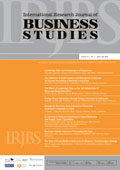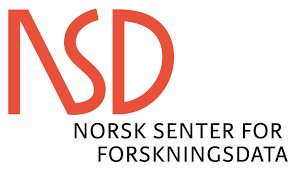Article Metrics |
|
|
Employees Work Stress Level in the Hospital
Abstract
Workers in the health industry are more likely having a higher level of stress compare to other professions in other sectors. Work stress impacts adverse consequences such as fatigue, absenteeism, turnover, customer dissatisfaction, and for health professionals, in particular, it will lead to incorrect diagnosis and curative action. The study aims to identify the source of stress in the hospital among three divisions; medical professional, medical support, and general support as a case study to 181 employees at a hospital in Depok city. Job stress survey (JSS) is selected to measure employee work stress based on three indicators: job stress, job pressure, and lack of organisational support. Job stress survey maps the severity of stress, the frequency of stress, and the index of stress for all those three indicators. The research design is quantitative and uses analysis of variance (ANOVA) to test the different level of stress among three divisions. The result indicates the level of stress is different among three divisions based on stress severity. However, the difference is insignificant on stress frequency and stress index on two indicators namely job pressure and lack of organisational support. Among three divisions, professional medical workers experience the highest level of stress. The implication of the research is discussed.
Full Text:
References
Agyemang, C.B., Nyanyofio, J.G., & Gyamfi, G.D. (2014). Job Stress, Sector of Work, and Shift-Work Pattern as Correlates of Worker Health and Safety: A Study of a Manufacturing Company in Ghana. International Journal of Business and Management, 9(7), 59-69.
Azwar, A. (1996). Pengantar Administrasi Kesehatan. Edisi Kedua. Jakarta: PT. Bina Rupa Aksara.
Dewe, P.J., ODriscoll, M.P., Cooper, C.L. (2012). Theories of Psychological Stress at Work. R.J. Gatchel and I.Z. Schultz (eds.), Handbook of Occupational Health and Wellness, Handbooks in Health, Work, and Disability. New York: Springer Science Business Media
Habibi, E., Dehghan, H., Safari, S., Mahaki, B., & Hassanzadeh, A. (2014). Effects of work-related stress on work ability index among refinery workers. Journal of Education and Health Promotion, 7(1), 43-48.
Himabindu N., & Syed, S.M. (2013). Stress Management In Sri Venkateswara Institute Of Medical Sciences Hospital, Tirupati, Andhra Pradesh. International Journal of Organizational Behaviour & Management Perspectives, 2(1), 286-295.
Holmstrom, S., Molander, B., Jansson, J., & Bergqvist, M.B. (2008). Evaluation of a Swedish version of the Job Stress Survey: Personality and Social Sciences. Scandinavian Journal of Psychology, 49, 277286.
Hu, Y., Wang, D., Xu, G., & Xu, P. (2014). The Relationship Between Work Stress And Mental Health In Medical Workers In East China. Social Behavior And Personality, 42(2), 237-244.
Ibrahim, H.I. (2014). The Relationship Between Job Stress, Co-Worker Support And Organization-Based Self-Esteem: A Survey Across Different Occupations. Journal of Arts, Science & Commerce, 69-78.
Jannoo, Z., Yap, B. W., & Haron, H. (2014). Evaluation of the job stress survey and its factor structure. Quality and Quantity, 49(2), 711726.
Lu, L., Liu, L., Sui, G., & Wang, L. (2015). The Associations of Job Stress and Organizational Identification with Job Satisfaction among Chinese Police Officers: The Mediating Role of Psychological Capital. International Journal of Environment Research Public Health, 12, 1508815099.
Mohsin, S.F., & Wahab, A. (2013). Stress Management and Steps of Managing Stress. Asia Pacific Journal of Management & Entrepreneurship Research, 2(1), 164-172.
Nowrouzi, B., Lightfoot, N., Lariviere, M., Carter, L., Rukholm, E., Schinke, R., & Gardner, D.B. (2015). Occupational Stress Management and Burnout Interventions in Nursing and Their Implications for Healthy Work Environments. Workplace Health & Safety, 63(7), 308-315.
Obasohan, M.O., & Ayodele, K.O. (2014). Assessment of Job Stress among Clinical Health Workers in Three Selected Health-care Industries in Lagos State, Nigeria. Ife PsychologIA, 22(2), 58-63.
Parker, H. (2007). Stress Management. Delhi: Global Media.
Pisljar, T., Lippe T., & Dulk, L. (2011). Health among hospital employees in Europe: A cross-national study of the impact of work stress and work control. Social Science & Medicine, 72(6), 889-906.
Salilih, S.Z., & Abajobir, A.A. (2014). Work-Related Stress and Associated Factors Among Nurses Working in Public Hospitals of Addis Ababa, Ethiopia: A Cross-sectional Study. Journal of Workplace Health & Safety, 62(8), 326-332.
Sekaran, U. (2003). Research Methods For Business. United States of America: Southern Illinois University at Carbondale.
Thian, J.H.M., Kannusamy, P., Gu H. H., & Yobas, P.K. (2015). Relationships among Stress, Positive Affectivity, and Work Engagement among Registered Nurses. Journal of Psychology, 6, 159-167.
Copyright (c) 2018 Lolyta Aditya Puteri, Muhammad Irfan Syaebani
International Research Journal of Business Studies has been covered by the following services: | ||||||||||||||||||||||||
|




















